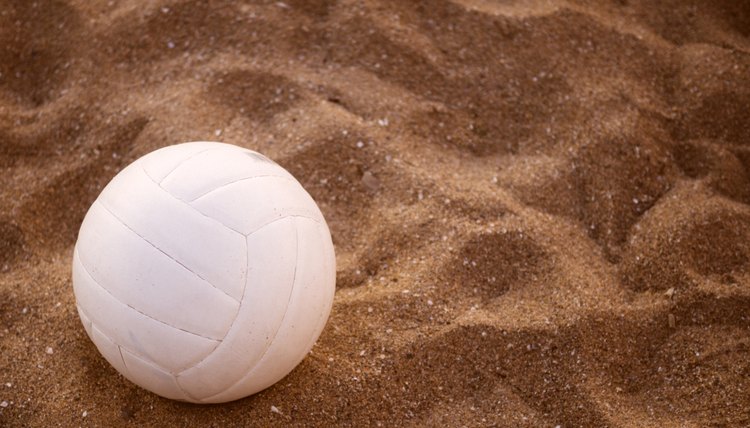History of Volleyball Balls

William G. Morgan of Massachusetts created volleyball in 1895, combining elements of basketball, baseball, handball and tennis into one sport. None of the existing balls at the time were suitable for keeping aloft over a high net. A new ball had to be developed specifically for this new sport.
Early Balls
Because the ball needs to be kept airborne, it needs to be fairly light but not so light that it can only move slowly. Originally the game was played with a bladder from a basketball but this was too slow as it was not heavy enough. Early players attempted to use basketballs but they were too heavy.
Spalding Ball
Morgan asked the factory of A.G. Spalding & Bros. near Chicopee, Massachusetts to make him a special ball for the game. They created a ball in 1900 consisting of three layers. The first was a latex bladder made from material like a bicycle tire, the second was a cheesecloth material around the bladder, and the third was a leather outer layer. This was satisfactory and modern volleyballs have not changed significantly since the first design.
Official Ball for the 2008 Olympics
For decades the volleyball was stitched with an 18-panel construction. For the Olympic indoor volleyball competition in 2008 the company Mikasa developed and manufactured a new design. This new ball has an eight-panel design to allow more hand contact on the ball for improved accuracy. The ball has dimples which are meant to create a truer flight pattern. This was the first major design change in over 100 years.
Ball Specifications and Volleyball Highlights
Modern volleyballs have a circumference of between 25 and 27 inches, and weigh from 9 to 12 ounces. Volleyball was introduced to the Olympic Games in 1964 in Tokyo. The United States won their first volleyball Olympic medal at Los Angeles in 1984, when the men's team won gold, and the women won silver. Beach volleyball became an Olympic sport in 1996, the year after the game was 100 years old.
